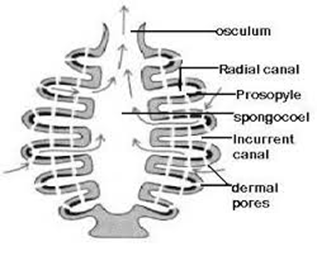Steps Of Glycolysis EMP Pathways - Biology Blog
Glycolysis Cycle
Glycolysis is a metabolic pathway that occurs in the cytoplasm of the plant cell that converts glucose into pyruvate. This is the ten-step process and in the whole process, energy is released which is used to form high energy compounds like ATP & NADH. This cycle is also known by the EMP Pathway as Embeden, Mayeroff, and Parnas discovered this process. In the whole process, 8 molecules of ATP are formed.
The first step starts with the phosphorylation of glucose, for this Hexokinase enzyme is used. Now after using the enzyme glucose is converted into Glucose 6 Phosphate. In this reaction, ATP molecule is consumed which maintains the transport of glucose molecule into the cell through plasma membrane.
The second step is , Glucose 6 Phosphate is rearranged into Fructose 6 Phosphate with the help of enzyme isomerase.
The third step is the phosphorylation of Fructose 6 Phosphate which forms Fructose 1,6 Bi Phosphate with the help of enzyme Phosphofructokinase. There is the hydrolysis of the ATP molecule in this step.
The hexose ring is now split by the enzyme Aldolase into Glyceraldehyde 3 Phosphate. There are two types of aldolase present in nature first in animal cell & plant cell and other in Fungi.
Isomerization takes place and there is a formation of Dihydroxyacetone Phosphate. Now one molecule of carbon is reduced here to make carbohydrate compounds. The remaining five compounds continue in the cycle to make the next compound.
Isomerase regulates the next process convert 1,3 diphosphoglyceraldehyde.
Now the next phase is the payoff phase in which oxidation takes place and inorganic phosphate is added to them which form 1,3 biphosphoglyceric acid. The hydrogen molecules are used to reduce NAD to form NADH.
Now one phosphate is transferred from 1, 3 Biphosphoglyceric acid, and form 3phosphoglyceric Acid. In this reaction, ADP is converted into ATP.
Mutase enzyme isomerizes this reaction and 2 phosphoglyceric acids are formed.
In the next reaction Enolase enzyme act and form Phosphoenolpyruvate from 2 Phosphoglyceric acids.
Phosphorylation takes place and Pyruvate is formed and the ATP molecule is also used in this reaction.
| Topic | Link |
|---|---|
| Types of Eggs | Developmental Biology | View Article |
| 30 Best Presentation Topics in Biology (USA) | View List |
| Steps Involved in Pisciculture | Read Steps |
| DNA Fingerprinting: Procedure, Advantage & Application | Explore |
| Ant Life Cycle: Stages and Development | See Stages |
| Biology & Characteristics of Living Things | Understand Basics |
| Predator, Parasitic & Saprophytic Food Chain | Read Examples |




Comments
Post a Comment